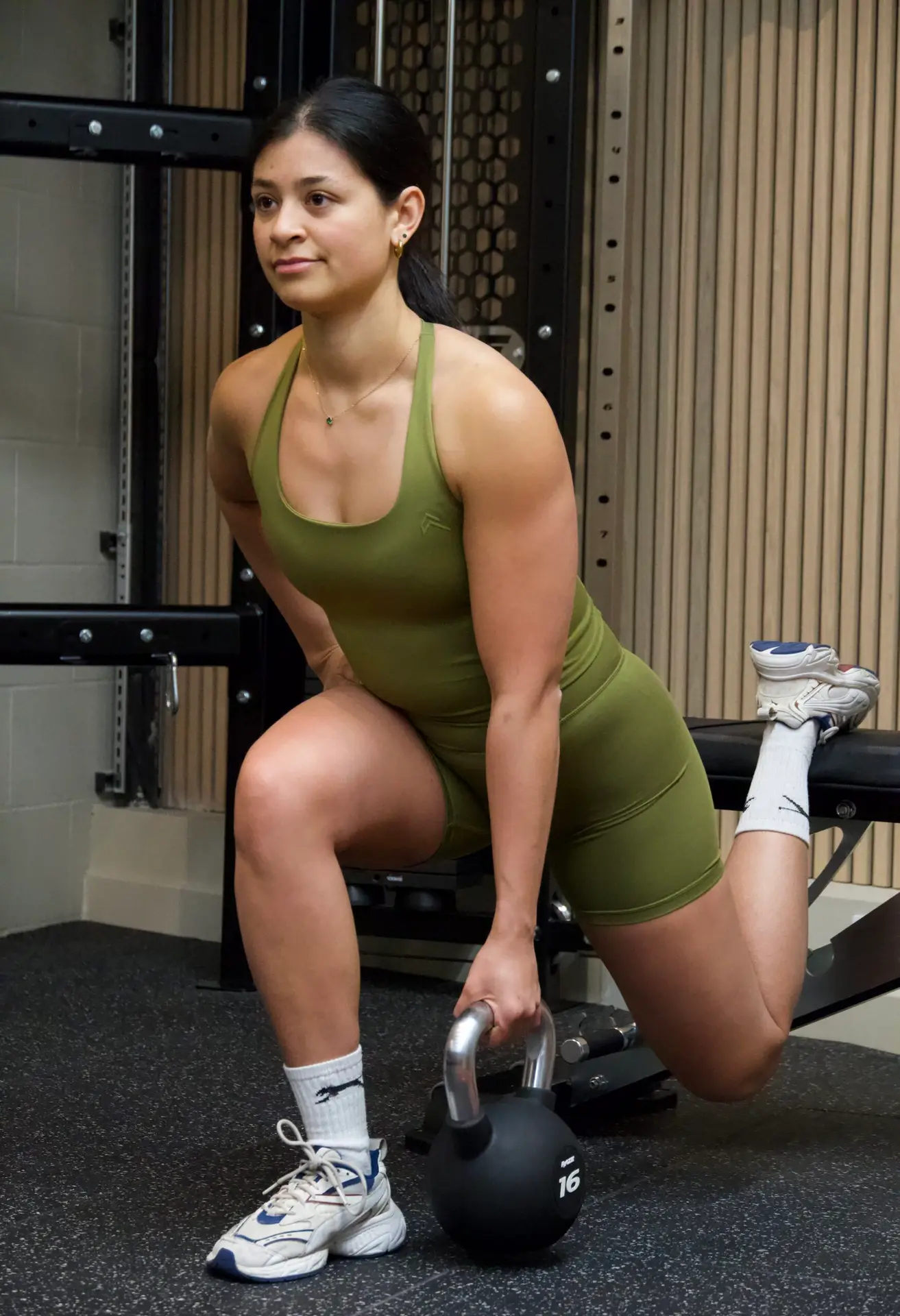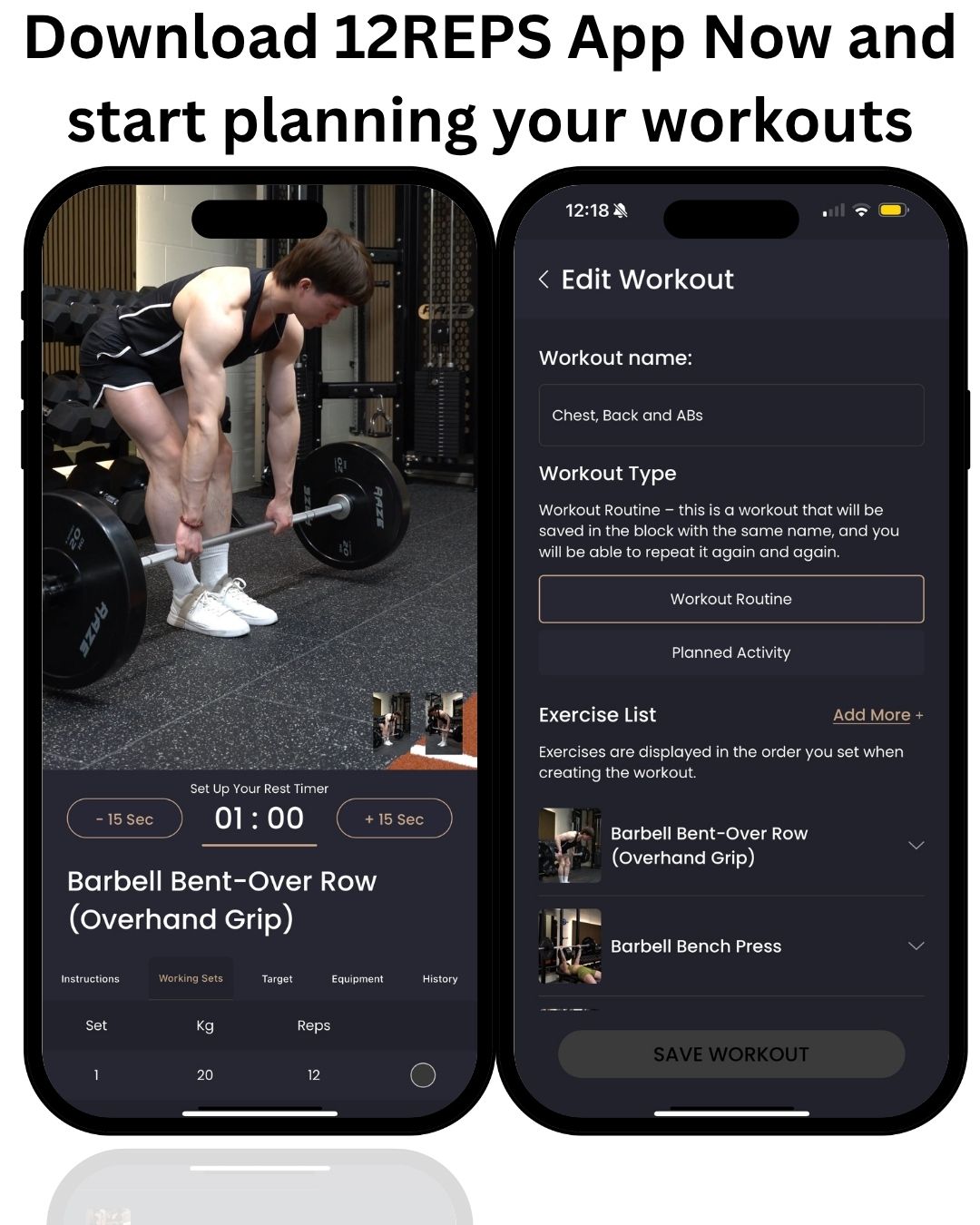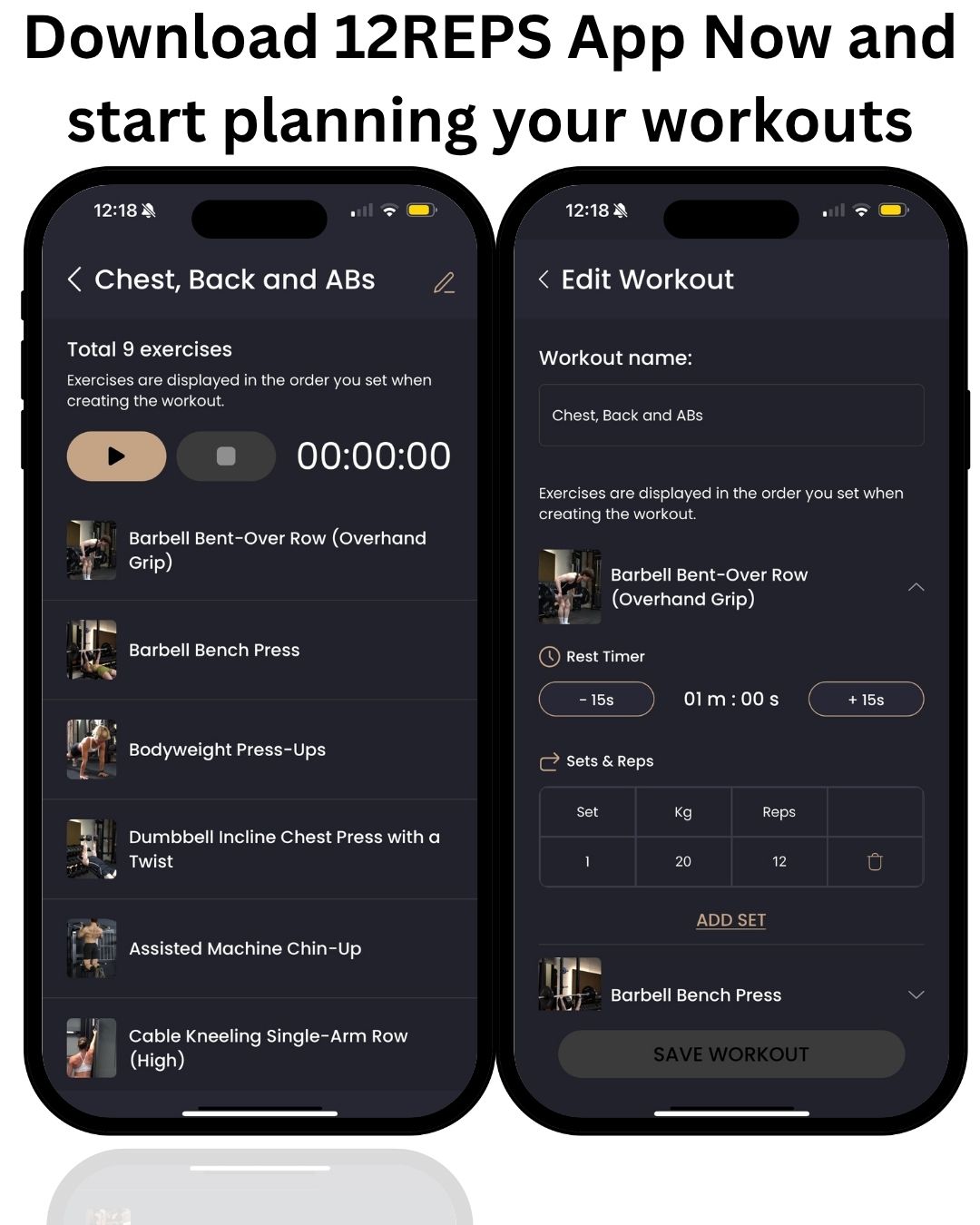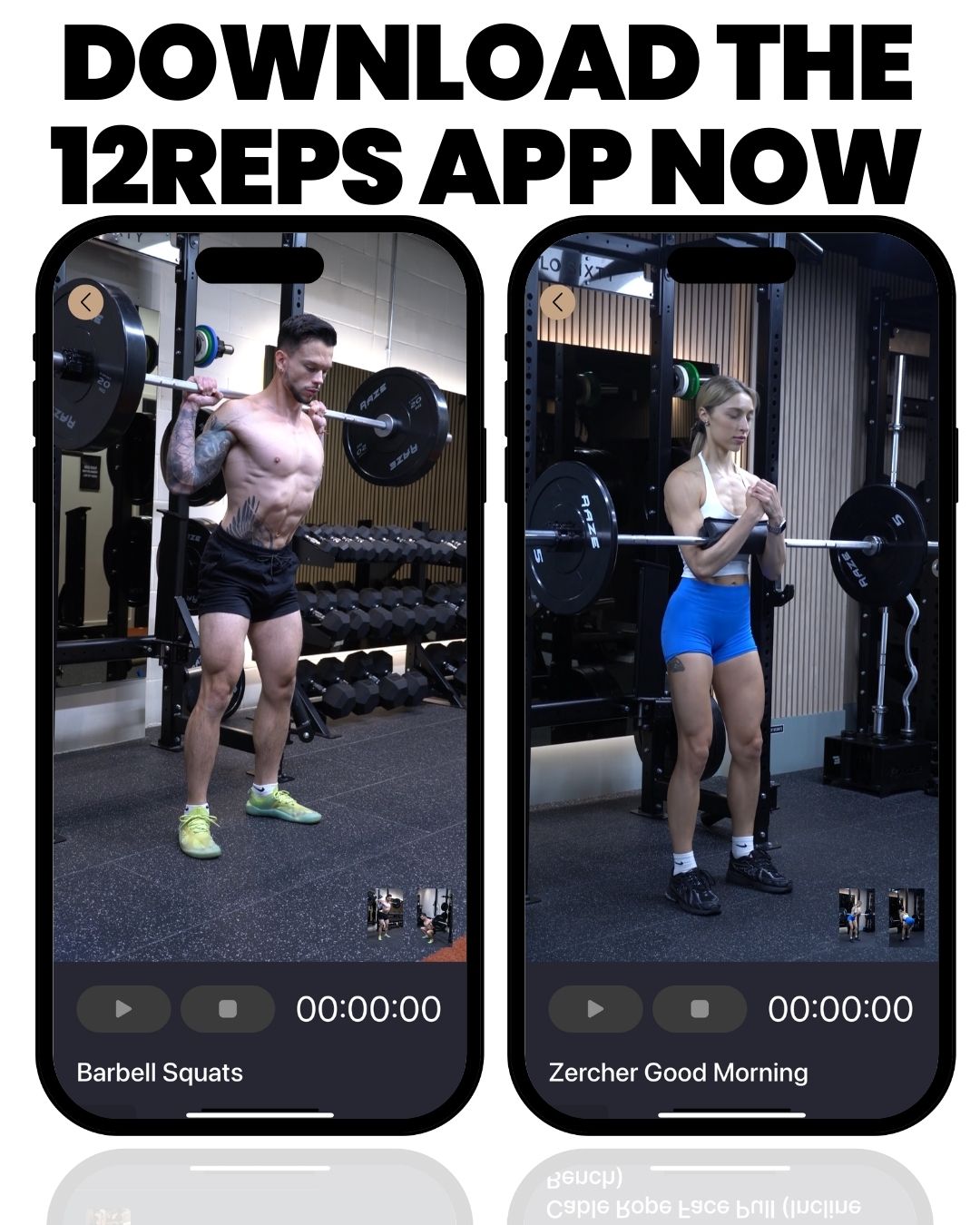By Will Duru, BSc (Hons) Sport and Exercise Science – Award-Winning Personal Trainer (10+ year’s experience)
Hi, I’m Will Duru. Over the past decade, I’ve helped hundreds of women (including many over 40) transform their bodies through smart strength training and balanced nutrition. This 5-day training split is the exact style of program I use with my clients to gain lean muscle, burn body fat, and tighten loose skin. Don’t worry, lifting weights will not make you “bulky.” In fact, I’ve witnessed time and again that when women embrace strength training, they build incredible strength, sculpt lean muscle, and boost their metabolism and confidence. The key is a strategic approach: progressive overload, proper recovery, and fueling your body right.
This guide will walk you through a beginner-friendly 5-day workout routine (with beginner exercises using dumbbells, machines, kettlebells, TRX, or just bodyweight) specifically designed for women around 40 and above. We’ll bust the myths, cover the importance of nutrition (protein, carbs, fats – how much of each and the best sources), and emphasise why lifting heavy for you is so effective at burning fat and toning muscle. By the end, you’ll have a complete day-by-day plan (with exercise alternatives to choose from), plus tips on recovery.
A strong woman performing a back exercise with confidence – strength training is empowering at any age.
Table of Contents
- Introduction – Meet your coach (Will Duru) and overview of results to expect
- What Is a 5-Day Training Split? – Structure of the program and weekly layout
- Progressive Overload: The Key to Growth – Why continually challenging your muscles is crucial
- Lifting Heavy Isn’t Just for Men – Myth-busting and benefits for women 40+
- Nutrition for Lean Muscle & Fat Loss – Protein, carbs, fats (how much per body weight and best types)
- Rest and Recovery – The importance of rest days, active recovery, and stress relief
- Workout Plan: Day-by-Day Breakdown – Exercises, sets/reps, and alternatives for each day:
- Monday – Chest & Back
- Tuesday – Shoulders, Biceps & Triceps
- Wednesday – Legs, Abs & Calves
- Thursday – Off (Rest Day)
- Friday – Cardio/Conditioning
- Saturday – Home Workout (Yoga/Pilates/Stretching)
- Sunday – Mind & Body (Meditation & Stretching)
- Conclusion, Staying consistent, tracking progress, and next steps (download the 12Reps app!)

What Is a 5-Day Training Split?
A 5-day training split means you’ll be active five days per week, with different focuses each day. This approach targets specific muscle groups or fitness activities on designated days, allowing for effective training while giving each area time to recover before you hit it again. Here’s how we’ve structured the week in this program:
- Monday: Chest and Back
- Tuesday: Shoulders, Biceps, Triceps
- Wednesday: Legs, Abs, Calves
- Thursday: Off (Rest and Recovery)
- Friday: Cardio (e.g. running, cycling, incline walking, hiking)
- Saturday: Home Workout – 10 minutes of Yoga/Pilates or full-body stretching
- Sunday: Morning Meditation (20 min) + Stretching (5 min)
Each training day has a specific purpose. By the end of the week, you will have worked all major muscle groups and addressed cardio, flexibility, and mental wellness. Five days of exercise are challenging yet manageable; they strike a balance between pushing your body and giving it enough rest. (Remember, more days in the gym aren’t always better; quality and recovery matter.) This split is flexible too: if you ever need to swap days around, that’s okay. The core idea is consistency, combined with a good mix of strength, cardio, and recovery.
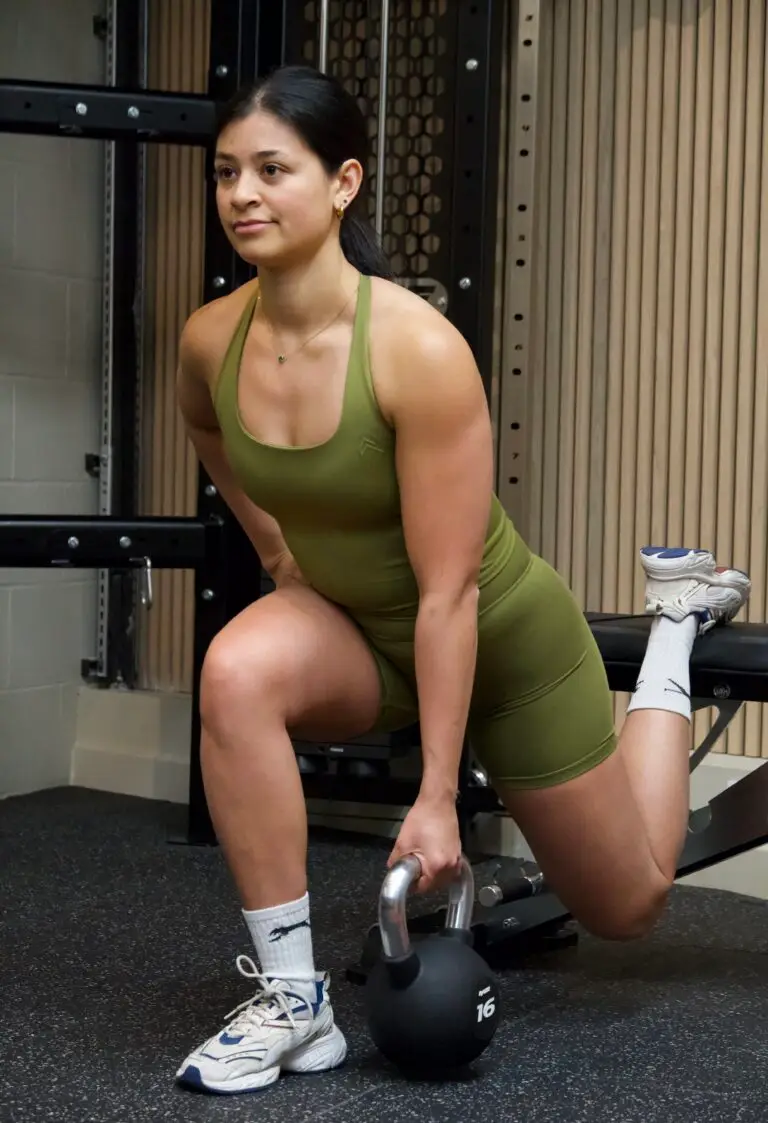
Progressive Overload: The Key to Continuous Muscle Growth
If there’s one principle I emphasise to every client, it’s progressive overload. This simply means gradually increasing the demands on your muscles over time. Why? Because our bodies are incredibly adaptable, if you keep doing the exact same workout with the same weights and reps, eventually your muscles will get used to it and stop improving. To continue gaining strength and lean muscle mass, you need to consistently challenge your muscles a bit more with each session.
Progressive overload can be applied in a few ways: add a little more weight, do an extra rep or set, or even improve your form/technique to make the exercise more challenging. These small changes signal your body that it must adapt by building stronger, tighter muscles. For example, if you did 3 sets of 10 squats with a 5 kg dumbbell last week, try 3 sets of 12 this week, or use a 6 kg dumbbell for 8–10 reps. Those extra efforts compound into amazing progress over weeks and months.
Equally important, listen to your body and progress safely. For most sets in this program, aim to finish each set feeling like you could only do ~1–2 more good reps (this is about an 8/10 effort level). That ensures you’re working hard enough to spur growth, without risking injury. Over time, what used to feel hard will become easier; that’s your cue to increase the challenge again. This is where tracking helps: writing down your weights/reps or using a smart tool like the 12Reps app will ensure you’re always pushing a bit further. In fact, the 12Reps app can automatically adjust your workouts so you never plateau and continue to see progress. The bottom line: keep your muscles on their toes (so to speak) by steadily upping the ante, and they will respond by getting stronger and more toned.
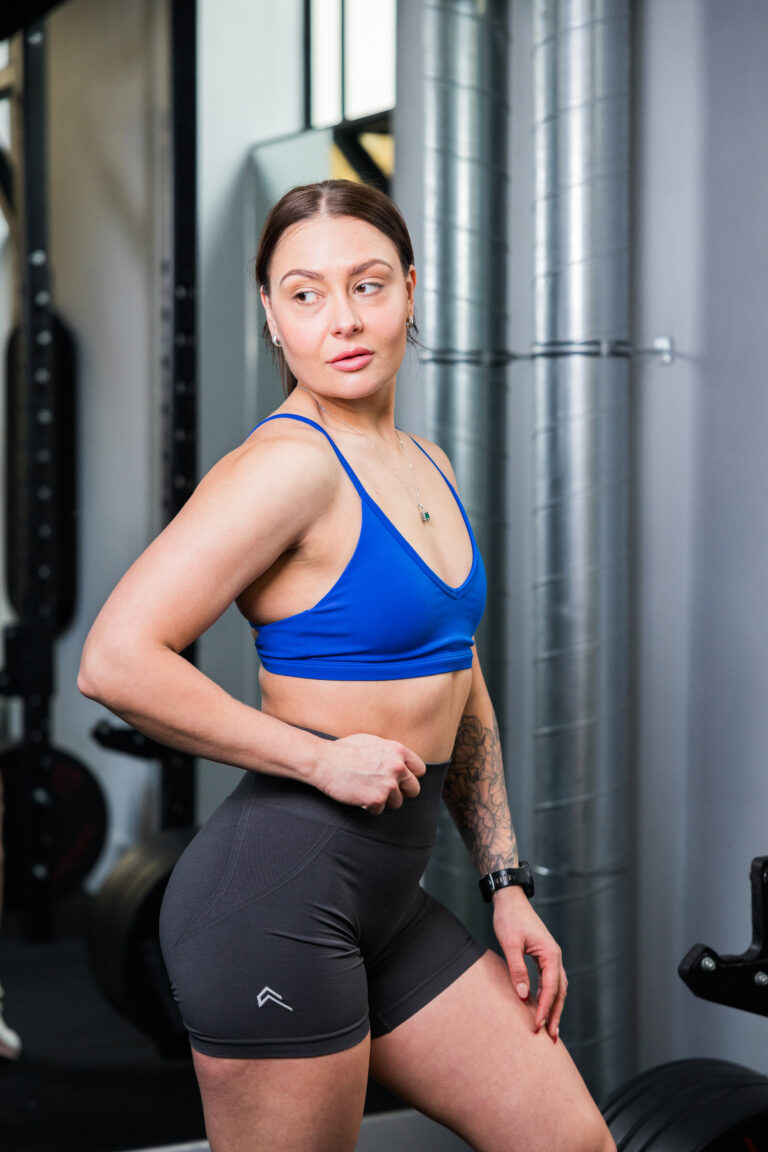
Lifting Heavy Isn’t Just for Men – Why Women 40+ Should Embrace Weights
Let’s tackle the elephant in the room: the myth that heavy strength training makes women bulky. This is simply not true. I often encounter women (especially over 40) who hesitate to increase weights due to this outdated fear. The reality is, building “bulky” muscle is extremely hard (even for men with lots of testosterone!). What does happen when you lift weights is that you build lean muscle, which gives a firm, toned appearance and increases your metabolism. As I always tell my female clients, lifting intelligently and challenging your muscles will transform your body in positive ways.
When I say “lift heavy,” I mean don’t be afraid to challenge yourself. Heavy is relative to your current strength; for some, a heavy workout might be 5 kg dumbbells, for others, it could be 15 kg. The point is to work in that 8–12 rep range with good form so that the last few reps feel challenging. By pushing past your comfort zone safely, you stimulate muscle fibres to grow stronger. More muscle also means a higher resting metabolism, so you’ll actually burn more calories (and fat) even at rest, thanks to the muscle you’ve built. It’s a fat-burning furnace!
I’ve had the privilege of training countless women in their 40s, 50s, and beyond, and I’ve seen what happens when they start lifting heavier: they become stronger, leaner, and more confident. They often comment on how everyday activities (carrying groceries, playing with grandkids, etc.) become easier. Heavy strength training, combined with proper form and recovery, can even help tighten up loose skin by building firm muscle underneath and improving overall skin health (through increased blood flow and nutrient delivery to the skin). So, ladies, trust the process – challenging your muscles is the secret to a toned body. We’re not training to be bodybuilders on stage; we’re training to be healthy, fit, and strong.
Coach’s Tip: Focus on form first, then gradually increase weight. If you’re new, start with lighter weights to nail down technique. Once you’re comfortable, don’t shy away from picking up heavier dumbbells or adjusting the machine to add resistance. You might be surprised at how strong you already are – and you’ll only get stronger from here!
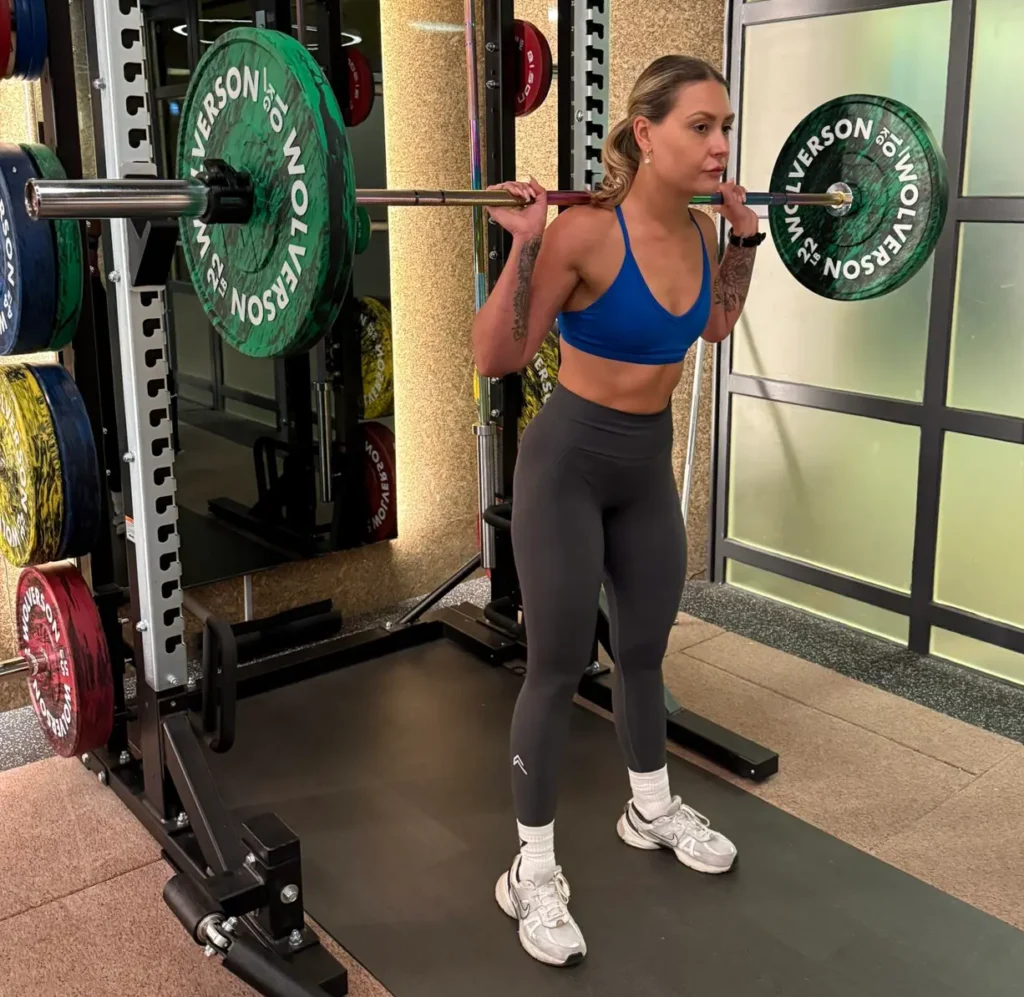
Nutrition for Lean Muscle Gain and Fat Loss
You’ve probably heard the saying: “You can’t out-train a bad diet.” Nutrition is half the battle (maybe more!). To see real results, muscles getting firmer and fat slowly melting away, you need to fuel your body with the right balance of macronutrients: protein, carbohydrates, and fats. Here’s a simple breakdown of how much of each you should aim for and why:
- Protein – The Building Block: Protein is crucial for repairing and building muscle tissue. I recommend ~1.6–2.2 grams of protein per kilogram of body weight per day (about 0.8–1.0 grams per pound). For example, if you weigh 70 kg, that’s roughly 112–154 grams of protein daily. Spread your protein intake across meals to optimise absorption and recovery. Great protein sources include lean meats (chicken, turkey, lean beef), fish, eggs, low-fat dairy (Greek yoghurt, cottage cheese), and plant-based options like beans, lentils, tofu, and protein shakes. Consuming adequate protein not only helps build muscle, it also supports skin health (thanks to amino acids like collagen), which can help tighten skin as you get leaner.
- Carbohydrates – Fuel for Performance: Carbs are not the enemy; in fact, they are your muscles’ preferred fuel for workouts. Aim for roughly 4–6 grams of carbs per kilogram of body weight per day (about 2–3 grams per pound), adjusting up or down based on your activity level and how your body responds. Using the 70 kg example, that’s ~280–420g of carbs daily. Focus on quality carbs that provide long-lasting energy and nutrients: oatmeal, whole grain bread/pasta, brown rice, quinoa, sweet potatoes, fruits, and plenty of vegetables. Carbs consumed before exercise will give you the energy to power through strength workouts (so you can lift heavier and get more out of it), and carbs after exercise help replenish your muscles and speed recovery. Don’t be afraid of carbs, they’re your friend for an active lifestyle!
- Fats – Essential for Health and Hormones: Dietary fat is important for hormone production (like testosterone and growth hormones, which we need for muscle building) and overall cell health. About 0.5–1 gram of fat per kilogram of body weight is a good range (roughly 20–35% of your total calories). For 70 kg, that’s ~35–70g of fat per day. Prioritise healthy fats such as avocados, nuts, seeds, olive or coconut oil, nut butters, and fatty fish (salmon, sardines). These provide essential fatty acids and have anti-inflammatory benefits that aid recovery. Fats are calorie-dense, so watch portions, but don’t go ultra-low fat – your body needs fat to absorb certain vitamins and keep your skin, hair, and hormones healthy.
In addition to macros, remember to stay hydrated. Muscles are about 75% water, and being even mildly dehydrated can hurt your strength and metabolism. Aim for at least ~2–3 liters of water per day (more on hard training days). Proper hydration will also improve your skin elasticity (important if you’re tightening up loose skin).
Finally, to burn fat while building muscle, you want a slight caloric deficit or at least maintenance calories with high protein. If weight loss is a goal, try eating about 200–300 fewer calories than your body burns daily, but no crash diets! Slow and steady wins the race, especially for sustainable fat loss and skin tightening. By eating plenty of protein and nutrient-rich foods, you’ll support muscle growth and give your body what it needs to recover from workouts. Treat food as fuel for your body. When you pair this kind of balanced diet with consistent training, that’s when magic happens.
Rest and Recovery, Why Your Off Days Matter
It might surprise you, but muscles grow when you rest, not during the workout. Training is the stimulus, but the actual strengthening and repairing of muscle fibers happen during rest. That’s why I’ve built in two “off” days (Thursday and Sunday) for recovery and self-care. Especially for women over 40, recovery is vital for avoiding injury and maintaining high energy levels.
Thursday – Off / Light Activity: After three consecutive workout days (Mon–Wed), your body will welcome a break. Use Thursday to rest completely or do only very gentle activity. You can take a leisurely walk, do some light stretching or yoga, or simply focus on hobbies and relaxation. This day is also a perfect time to ensure your nutrition is on point, since you’re not training, all those good proteins, carbs, and healthy fats will go toward rebuilding your muscles stronger. Make sure you’re getting 7–9 hours of quality sleep as well, since deep sleep is when a lot of muscle repair and growth hormone release happens.
Sunday – Mind & Body Recharge: Sunday is another non-intense day, but we’ll use it for active recovery and mental wellness. I recommend doing about 20 minutes of meditation in the morning to clear your mind and reduce stress. High stress can raise cortisol (a hormone that, in excess, can encourage fat storage and break down muscle), so managing stress through practices like meditation is beneficial for your fitness goals. After meditation, spend 5 minutes stretching your major muscle groups, think of areas that felt tight during the week (maybe your legs, back, shoulders) and gently stretch them. You can also use a foam roller if you have one or even treat yourself to a warm bath. Some of my clients over 40 love to incorporate contrast therapy (a hot bath or shower followed by a quick cool rinse) to stimulate blood flow and reduce soreness – but that’s optional. The main goal on Sunday is to rejuvenate. By taking care of your mind and body, you’ll head into Monday feeling refreshed and ready to tackle a new week of training.
Remember: rest days are not “wasted” days, they are when your body adapts to the hard work you’ve put in. Embrace them just as you embrace the workout days. If you ever feel extra sore or fatigued, don’t hesitate to adjust the plan, sometimes an extra rest day or a lighter session is the smart move. Long-term consistency beats short-term intensity.
Now that we’ve covered the principles, let’s get into the fun part, the workout plan itself!
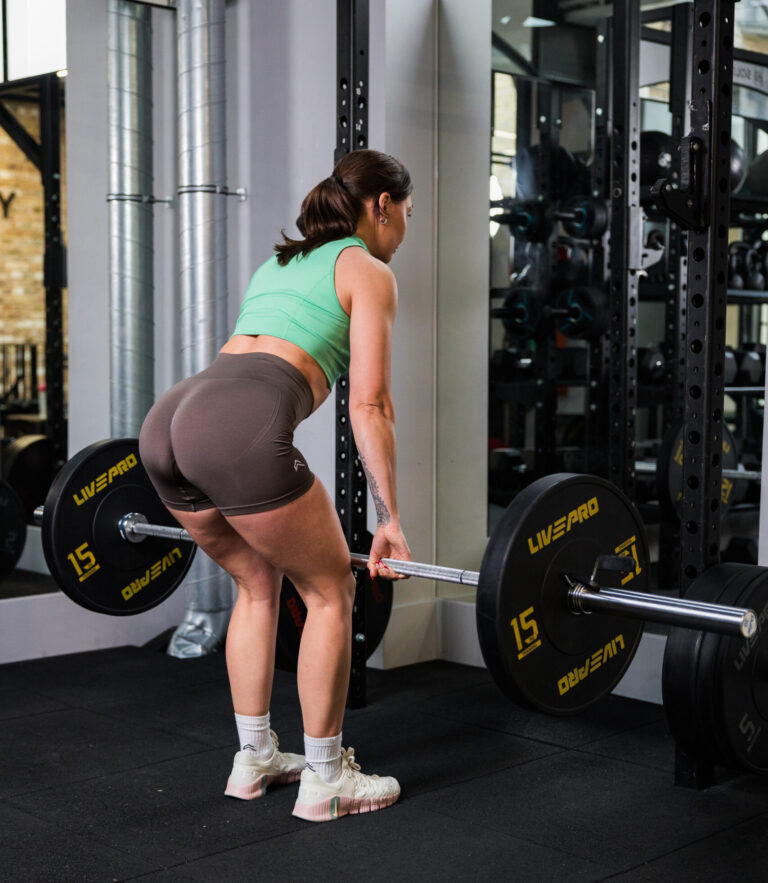
Workout Plan: Day-by-Day Breakdown
Below is the detailed workout schedule for each day of the 5-day split. For the strength training days (Mon–Wed), you’ll see a list of exercises in a table format. Each exercise includes the recommended sets, repetitions, rest intervals, and intensity levels. Intensity is noted in terms of RPE (Rate of Perceived Exertion) on a scale of 1–10 – aim for about 7–8/10 on most sets (challenging but not absolute max effort). Each exercise includes a warm-up set plus 4 working sets of 8–12 reps (choose a weight that makes 8–12 reps tough to finish with good form). Rest ~60–90 seconds between sets to catch your breath and be ready to give the next set your best.
For each day, I’ve also provided 3 alternative exercises you can substitute or rotate in, in case you have limited equipment or just want variety. All exercises are chosen with beginners and the 40+ age range in mind, they’re safe and effective when done with proper form. Let’s break it down:
Monday – Chest and Back
Focus: Upper body push (chest) and pull (back) exercises to build strength in your chest, back, and arms. A strong back and chest improve posture and give the upper body a lifted, firm appearance. Warm up with arm circles and light stretches, then get into it.
Exercise | Sets x Reps | Rest (sec) | Intensity (RPE) |
Dumbbell Bench Press – Chest (warm-up + flat bench) | 4 x 8–12 | 90 | 8/10 (last reps hard) |
Lat Pulldown (Machine or Band) – Back | 4 x 8–12 | 90 | 7–8/10 |
Machine Chest Press (or Push-Ups) – Chest | 4 x 10–12 | 60 | 7/10 (moderate) |
Seated Cable Row (or Dumbbell Row) – Back | 4 x 10–12 | 60 | 8/10 |
Dumbbell Flyes (Chest) – Chest stretch | 4 x 12 | 60 | 7/10 |
TRX Inverted Row (Bodyweight) – Upper Back | 4 x 8–10 | 60 | 8/10 (adjust angle) |
Alternative Exercises (Chest/Back): If you need to swap or add variety, consider Incline Dumbbell Press (for upper chest), Bent-Over Dumbbell Rows (if no cable machine), or Pulldowns with a Resistance Band (if you don’t have a lat pulldown machine). You can also try the Chest Press Machine instead of dumbbells or Assisted Pull-Ups instead of TRX rows if available. The goal is to hit similar muscle groups. Always prioritise form, squeeze the muscle at the peak of each rep and control the lowering phase.
Tuesday – Shoulders, Biceps, Triceps
Focus: All about the arms and shoulders! Toning your shoulders gives your arms a nice shape and can make your waist look slimmer. We’ll hit the deltoids (shoulder muscles) and the arms (biceps in front, triceps in back). This day will help tighten the arms and build strength for daily tasks. Warm up with some shoulder rolls and light arm swings.
Exercise | Sets x Reps | Rest (sec) | Intensity (RPE) |
Dumbbell Shoulder Press (Seated) – Shoulders | 4 x 8–12 | 90 | 8/10 (last reps tough) |
Lateral Raises (Dumbbell) – Side Delts | 4 x 10–12 | 60 | 7/10 (burn in shoulders) |
TRX Y-T Fly (Shoulder/Upper Back) – Rear Delts | 4 x 10 | 60 | 7/10 (bodyweight) |
Dumbbell Bicep Curls – Biceps | 4 x 10–12 | 60 | 8/10 (control tempo) |
Triceps Pushdown (Cable) – Triceps | 4 x 12 | 60 | 7–8/10 |
Dumbbell Tricep Kickbacks – Triceps | 4 x 12 | 60 | 7/10 (focus on squeeze) |
Alternative Exercises (Shoulders/Arms): You can substitute Arnold Press (for shoulders) instead of standard presses for variety, or use a Shoulder Press Machine if dumbbells bother your joints. For biceps, alternatives include Hammer Curls (works forearms too) or Cable Curls. For triceps, you might try Dumbbell Overhead Triceps Extensions or Bench Dips (bodyweight). Pick the movements that feel best for your body – the goal is to feel the muscles working without joint pain. By the end of this workout, your arms and shoulders should feel nicely fatigued (in a good way!).
Wednesday – Legs, Abs and Calves
Focus: Time to hit the lower body and core. Strong legs and a strong core are crucial for overall fitness and daily life (think climbing stairs, carrying things, etc.). For women over 40, focusing on legs and abs also helps improve balance and can tighten up the lower tummy and thigh area. This is a full lower-body day: quads, hamstrings, glutes, calves, plus some ab work. Start with a proper warm-up: do 5 minutes of brisk walking or light cycling to get blood into your legs, and some gentle leg swings.
Exercise | Sets x Reps | Rest (sec) | Intensity (RPE) |
Goblet Squat (Dumbbell or Kettlebell) – Quads/Glutes | 4 x 8–12 | 90 | 8/10 (push through heels) |
Leg Press (Machine) – Quads/Glutes | 4 x 10 | 90 | 8/10 (full range) |
Dumbbell Romanian Deadlift – Hamstrings/Glutes | 4 x 10 | 90 | 7–8/10 (stretch in hams) |
Glute Bridge (Bodyweight or DB) – Glutes/Hamstrings | 4 x 12 | 60 | 7/10 (pause at top) |
Calf Raises (Machine or Dumbbell) – Calves | 4 x 15 | 60 | 8/10 (burn in calves) |
Plank (Bodyweight) – Core/Abs (hold 30 sec = 1 set) | 4 x 30s | 60 | 7/10 (tight core) |
Alternative Exercises (Legs/Core): For squats, you can also do Bodyweight Box Squats (sitting back to a chair and up) if you need a gentler version. Instead of Leg Press, Wall Sits (hold a seated position against a wall) are a great static exercise for quads. If Romanian deadlifts are tricky, try Swiss Ball Hamstring Curls (lying on your back, feet on a ball). Other core alternatives include Dead Bugs or Bird-Dogs for gentler back-friendly ab work.
And if you want to mix up calf training, you can do Calf Raises on Stairs (for a deeper stretch) or Seated Calf Raises if you have the machine. The idea is to challenge your lower body safely – you should feel your thighs, glutes, and abs working, but no sharp pains in knees or back. Adjust range of motion or weight as needed. After this leg day, some muscle soreness (especially in the quads or glutes) is normal, especially if you’re not used to it. Don’t skip your Thursday rest day! Your legs will thank you for the recovery.
Thursday – Off (Rest Day)
Congratulations on making it to your rest day, you’ve earned it! There’s no formal workout today. The focus is on recovery. As mentioned earlier, use today to relax and rejuvenate: go for an easy walk outside for some fresh air, do a few gentle stretches or yoga poses if you feel stiff, or simply enjoy a day of not thinking about exercise. This is also a great day to double-check your nutrition and maybe do some healthy meal prep for the coming days. Make sure you’re eating plenty of protein and colourful veggies today to help repair muscles. And most importantly, try to get a good night’s sleep. Rest is when your muscles rebuild stronger and your energy stores get replenished, so treat this day as part of the program (because it is!).
(If you’re the type who must do something, keep it light: e.g., a 20-minute walk or an easy bike ride. But no intense workouts, give your body a break.)
Friday – Cardio & Conditioning Day
On Friday, we switch gears to focus on cardiovascular fitness and fat-burning through cardio exercise. Cardio is important for heart health, endurance, and yes, helping reduce body fat. It also gives your joints and muscles a break from heavy lifting while keeping you active. You have a few options here – choose an activity you enjoy (or mix two of them for variety). Aim for roughly 30–45 minutes of moderate cardio (you should break a sweat and breathe harder, but still be able to hold a short conversation). Here are some great choices for today:
- Running or Jogging – Outdoors or on a treadmill. Try a mix of jogging and brisk walking if continuous running is tough. (Alternative: Interval run where you run for 1 minute, walk for 1 minute, repeat.)
- Cycling – Outdoors on a bike or indoors on a stationary bike. Keep a steady moderate pace or do intervals by switching between easy and hard pedalling every few minutes.
- Treadmill Incline Walk – Set a treadmill to a high incline (e.g. 8–15%) and walk at a brisk pace. This can be as challenging as jogging and really works the glutes and calves due to the incline.
- Hiking – If you have trails or a good outdoor path nearby, a hike is fantastic for cardio. The uneven terrain also engages your core and stabiliser muscles. Go for a scenic walk and enjoy nature while burning calories.
- Elliptical or Rowing Machine – If you’re at a gym and prefer low-impact, the elliptical is easy on the joints and works both arms and legs. The rowing machine is also a full-body cardio workout that engages your back and arms.
- Dance/Zumba or Home Cardio Workout – If you enjoy dancing, put on some music and dance for 30 minutes, or follow a fun Zumba video. You could also do a home cardio circuit (e.g., jumping jacks, marching in place, gentle jump rope) if that’s more your style.
You do not need to do all of the above! Pick one or two activities that sound enjoyable. For example, you might do a 10-minute brisk walk to warm up, then 20 minutes of jogging, and a 10-minute cool-down walk. Or cycle for 30 minutes and call it a day. The goal is to get your heart rate up and break a sweat, which helps improve your cardiovascular health and burn extra calories.

Saturday – Home Workout (10-Minute Yoga/Pilates or Stretching)
By Saturday, we’ll have done three strength sessions and a cardio day. Today is about gentle movement, mobility, and core stability – a sort of active recovery that keeps you in the habit of exercising. You have a few options: a short yoga flow, a Pilates routine, or simply a stretching session. Aim for about 10–15 minutes of focused activity. This will improve your flexibility, help prevent injury, and relieve any muscle tightness from earlier in the week. Here’s a sample 10-minute routine combining yoga and stretches that you can do at home (no equipment needed):
- Child’s Pose (Yoga) – 1 minute. Kneel on the floor, sit your hips back toward your heels, and stretch your arms forward, lowering your chest. This gently stretches your back, shoulders, and hips. Breathe deeply.
- Cat-Cow Stretches (Yoga) – 1 minute. On hands and knees, arch your back up (cat), then dip your belly down and lift your head (cow). Move slowly with your breath; this mobilises the spine.
- Downward Facing Dog (Yoga) – 1 minute. From hands and knees, lift your knees and push your hips up to form an inverted V-shape. Press your heels toward the ground (they don’t have to touch) to stretch your calves and hamstrings, and push through your palms to lengthen your spine. Hold and breathe.
- Hip Flexor Stretch (Lunge Stretch) – 1 minute per side. Step one foot forward into a lunge, lower your back knee to the ground, and gently press your hips forward. You should feel a stretch in the front of your hip (on the kneeling leg). Switch sides. This helps open up tight hips (great for those who sit a lot).
- Cobra Stretch (Yoga) – 30 seconds. Lie on your stomach, place your hands under your shoulders, and gently press up, lifting your chest. This stretches your abdominal muscles and spine. Don’t overextend, just a gentle stretch.
- Seated Hamstring & Back Stretch – 1 minute. Sit on the floor with legs straight in front. Reach toward your toes (or shins, or knees – wherever you can reach) while keeping your back as straight as possible. You’ll feel a stretch in the backs of your legs (hamstrings) and lower back. Hold and breathe, trying to deepen the stretch slightly.
- Neck and Shoulder Rolls – 1 minute. Gently roll your neck in half-circles and shrug/roll your shoulders back and forth to release any tension.
Feel free to swap in other favourite stretches or poses. If you prefer Pilates, you might do core-focused moves like Pelvic Tilts, Glute Bridges, or Bird-Dogs – gentle but effective movements to engage your core and glutes. The key is to keep this session light and relaxing. There’s no need for sets/reps here; it’s more about time and quality of movement.
By the end of 10 minutes, you should feel loose, relaxed, and refreshed. This little routine can do wonders for soreness and will improve your joint mobility (important as we age). It’s also a nice way to connect with your body and unwind. Great work, you’re almost through the week!
Sunday – Morning Meditation & Stretch
Focus: Recovery for the mind and body. Sunday is all about resetting for the new week. Begin your day with 20 minutes of meditation. Find a quiet spot, sit or lie down comfortably, and close your eyes. You can use a guided meditation app or simply focus on your breathing. If 20 minutes feels too long at first, start with 5–10 minutes and work up. The goal is to reduce stress, improve mental clarity, and even help your body physiologically. Meditation can lower cortisol levels, which supports fat loss and muscle recovery.
After meditation, do about 5 minutes of light stretching. This isn’t a full workout, just a quick head-to-toe stretch to get the blood flowing:
- Gently roll your neck and stretch your side neck muscles (ear toward shoulder each side).
- Do some big arm circles or give yourself a big hug to stretch your upper back.
- Stretch your calves and hamstrings (as we did on Saturday) to keep your legs limber.
- Maybe a gentle twist for your spine (lie on your back, pull one knee across your body, then switch).
Take deep breaths during each stretch and enjoy the feeling of releasing tension. You can consider this active mindfulness. It’s a nice way to honour what your body accomplished over the week and prepare it for the next one.
Optional add-ons: If you feel like it, you could also incorporate a short walk outside later in the day, or even treat yourself to something like a massage or a warm Epsom salt bath in the evening. Self-care helps your fitness progress too!
By the end of Sunday, you’ve completed the entire program for the week, congratulations! Consistency is the secret sauce to success, so completing these five days (with adequate rest) is a huge win. Now let’s wrap up with some final thoughts.
Conclusion: Consistency, Progress Tracking, and Next Steps
You’ve got the game plan, now it’s time to put it into action and stay consistent. Remember, real results come from progressive overload, balanced nutrition, and regular recovery week after week. It might seem like a lot at first, but stick with it. In a few weeks, you’ll likely notice you’re feeling stronger, maybe your clothes fit differently, and you have more energy day-to-day. Take progress photos or note how your strength improves (e.g., those 5 kg dumbbells that felt heavy at first might feel light now). These non-scale victories will keep you motivated.
I also highly recommend tracking your workouts. When you know exactly how many reps or what weight you did last time, it’s easier to try to beat it next time (even if just by a little). You can use a simple notebook or leverage technology. In fact, as a coach, I developed the 12Reps app to make this super easy – it logs your sets/reps, shows you what to do each day, and even adjusts your plan as you get stronger. It’s like having me as a personal trainer in your pocket, guiding you and keeping you accountable. If you’re ready to take your training to the next level with personalised workouts and tracking, I invite you to download the 12Reps app and give it a try – your first week is free! (It’s available for both gym and home routines and will tailor the exercises to the equipment you have and your progress level.)
Lastly, stay positive and patient. Building lean muscle and burning fat is a gradual process – especially when you’re doing it the right way without crash diets or excessive training. But the process is incredibly rewarding. You’re not just changing how you look; you’re improving your health, strength, and confidence from the inside out. Age is truly just a number – I’ve seen women in their 40s and 50s achieve transformations that rival those of younger folks, simply by staying consistent and trusting the science. Your strongest, fittest self is ahead of you, not behind you!
So let’s make it happen. Commit to this 5-day split, fuel your body with nourishing foods, and don’t forget to enjoy the journey. Every workout is a step toward a stronger you, every protein-packed meal is feeding your muscles, and every rest day is rebuilding you better than before. I’m excited for you to see the changes in your body and mindset over the coming weeks. Yes, you can do this! Now grab those dumbbells, put on your favourite workout tunes, and show the world what a determined woman over 40 can accomplish.


